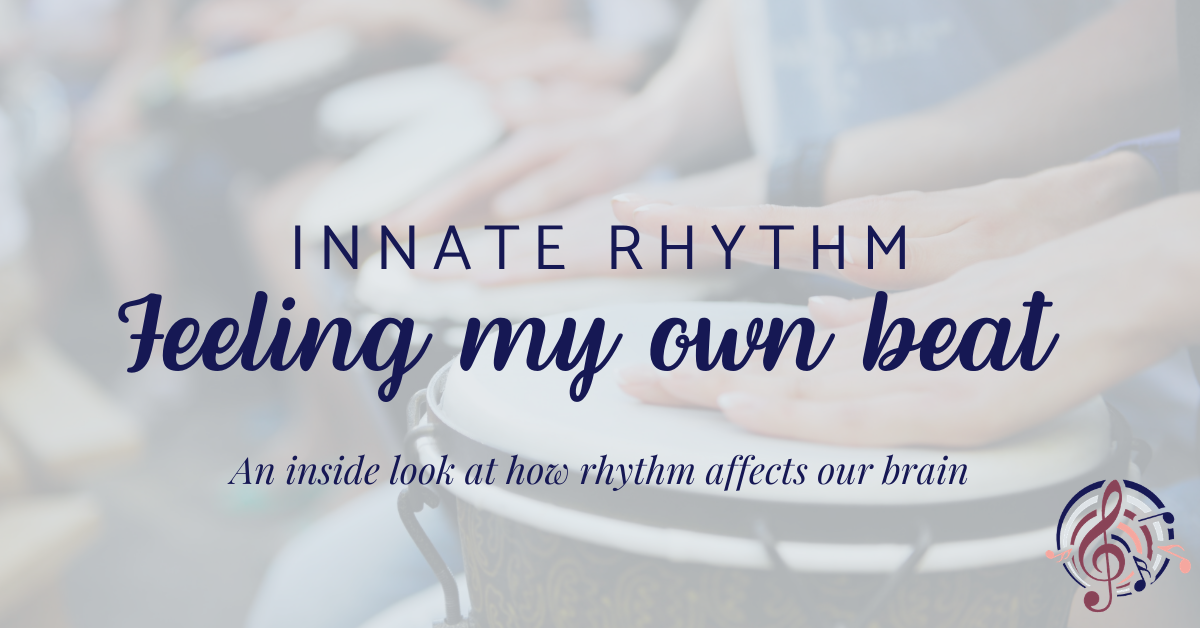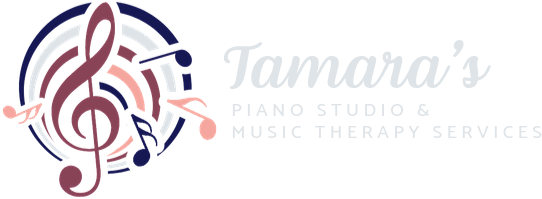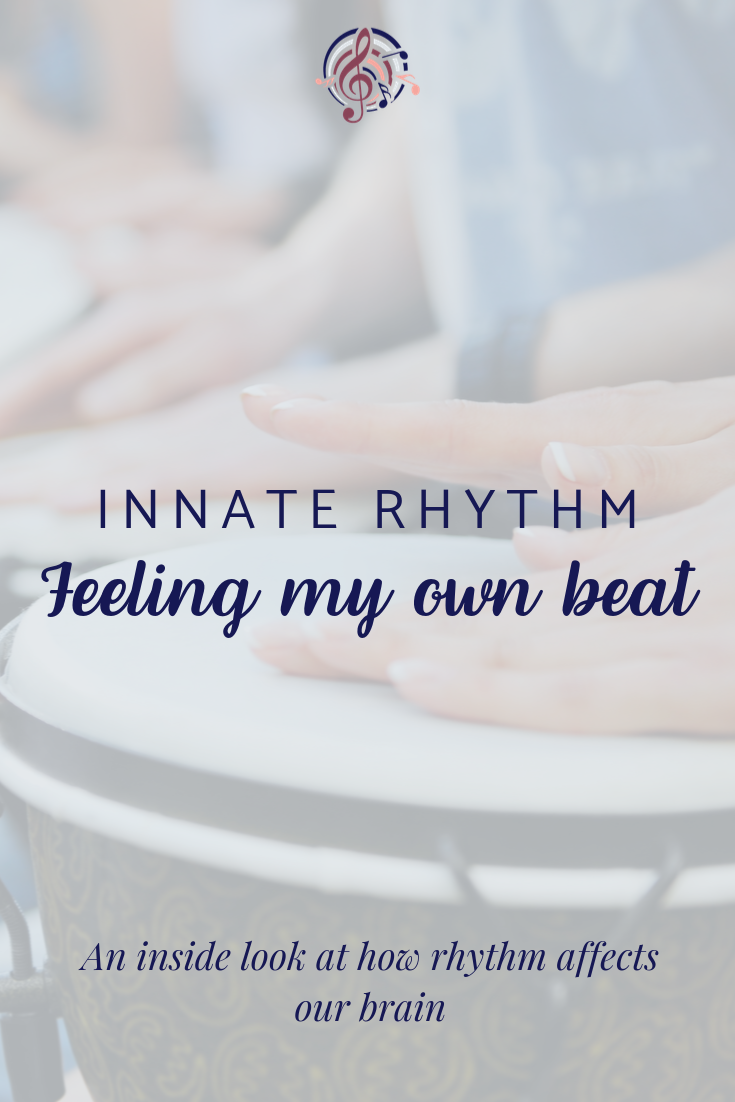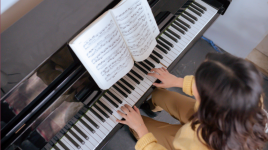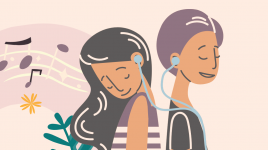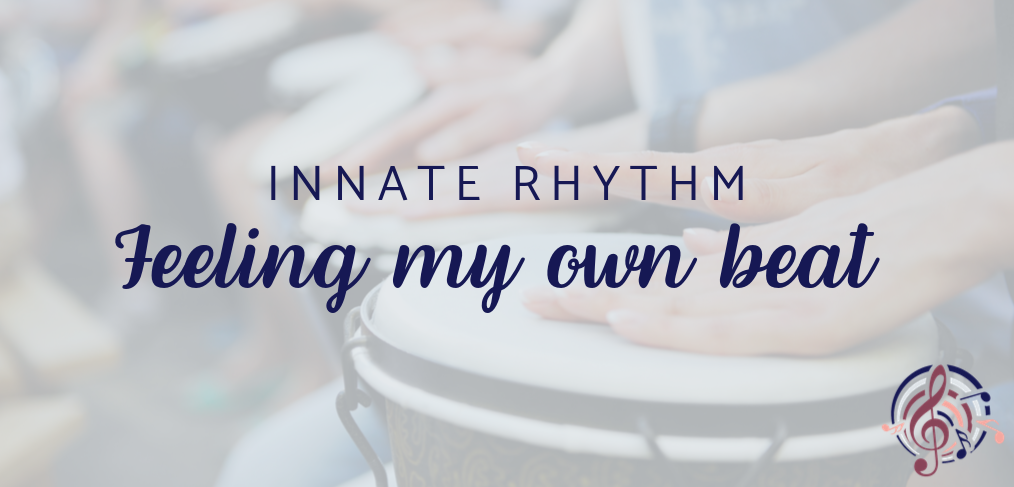
Innate Rhythm: Feeling My Own Beat
An inside look at how rhythm affects our brain
As human beings, we are innately rhythmic. Daily we feel our heartbeat, we hear the ticking of our car signals, we listen to the radio.
Even before birth we are exposed to a steady rhythm – our mothers’ heart beat. Newborn babies are hardwired to feel beats – research has shown that babies are aware of beat deception, or disruption in meter. It makes sense then that a beat, and the elements that create a beat, are an important aspect in music therapy and musical training (Winkler, Haden, Ladinig, Sziller, & Honing, 2008).
So what musical elements make up a beat?
A beat involves:
1. Tempo – the speed at which something is played, measured in beats per minute
2. Rhythm – the arrangement and length of the notes being played, also refers to sound duration of each note
3. Meter – the recurring pattern of stresses that provide the beat of music, it divides the beats into equivalent groupings
Our brains are excellent time-keepers! Studies show that a group of non-musicians were able to recall a songs tempo with 4% of the original tempo (Levitin, 2007). Regardless of musical training, we are innately able to perceive and recall elements of beat, specifically tempo in this case, because we are inherently rhythmic beings.
How come some people are better able to sustain a beat?
Those with musical training are likely able to stay in tempo for long periods of time. But some people simply interpret the beat differently. This can be because of varied neural processes or different musical backgrounds, changing from person to person.
How do our brains experience a beat?
Our brains are hardwired to be able to entrainment to a beat. Think about walking down the street and you hear a song. Instinctively, we begin to walk to the beat of the song! This is actually a prominent area of recent music therapy research. Our brain enables our motor system to naturally entrain to a rhythmic beat, allowing music therapists to target rehabilitating movements. Regardless of ability level, we are innate musical beings with immense brain abilities. The beat alone has the potential to have profound benefits in the music therapy setting (Thaut, McIntosh, Hoemberd, 2008).
Tempo, rhythm, and meter – all the components that make up a beat – are important aspects of music TPSMTS clients are exposed to daily, built in to every music lesson or music therapy session.
Our music therapists have received their training at The Academy of Neurologic Music Therapy and are certified as Neurologic Music Therapists (NMT).
Sources:
- Levitin, D. J. (2007). This is Your Brain on Music: The Science of Human Obsession. New York: Penguin Group.
- Thaut, M. H., McIntosh, G. C., Hoemberd, V. (2015). Neurobiological foundations of neurologic music therapy: rhythmic entrainment and the motor system. Frontiers in Psychology, 18.
- Winkler, I., Haden, G.P., Ladinig, O., Sziller, L., & Honing, H. (2008). Newborn infants detect the beat in music. Proceedings of the National Academy of Sciences, 106(7).
